Today we are taking a look at the Intel 665p 1TB PCIe 3.0 NVMe SSD designed to provide lower-cost NVMe storage to your M.2 slot. This drive is targeted at the value market and comes equipped with a Silicon Motion SM2263EN controller, DRAM cache, and 96-layer QLC NAND. In this review, we are not going to see anything groundbreaking. Instead, we are going to cover this drive while adding it to our database.
Intel 665p 1TB M.2 NVMe SSD
The Intel 665p 1TB comes in a single-sided M.2 2280 (80mm) form factor. That form factor means that it is easy to cool and therefore will work in a variety of different systems, including Project TinyMiniMicro nodes.
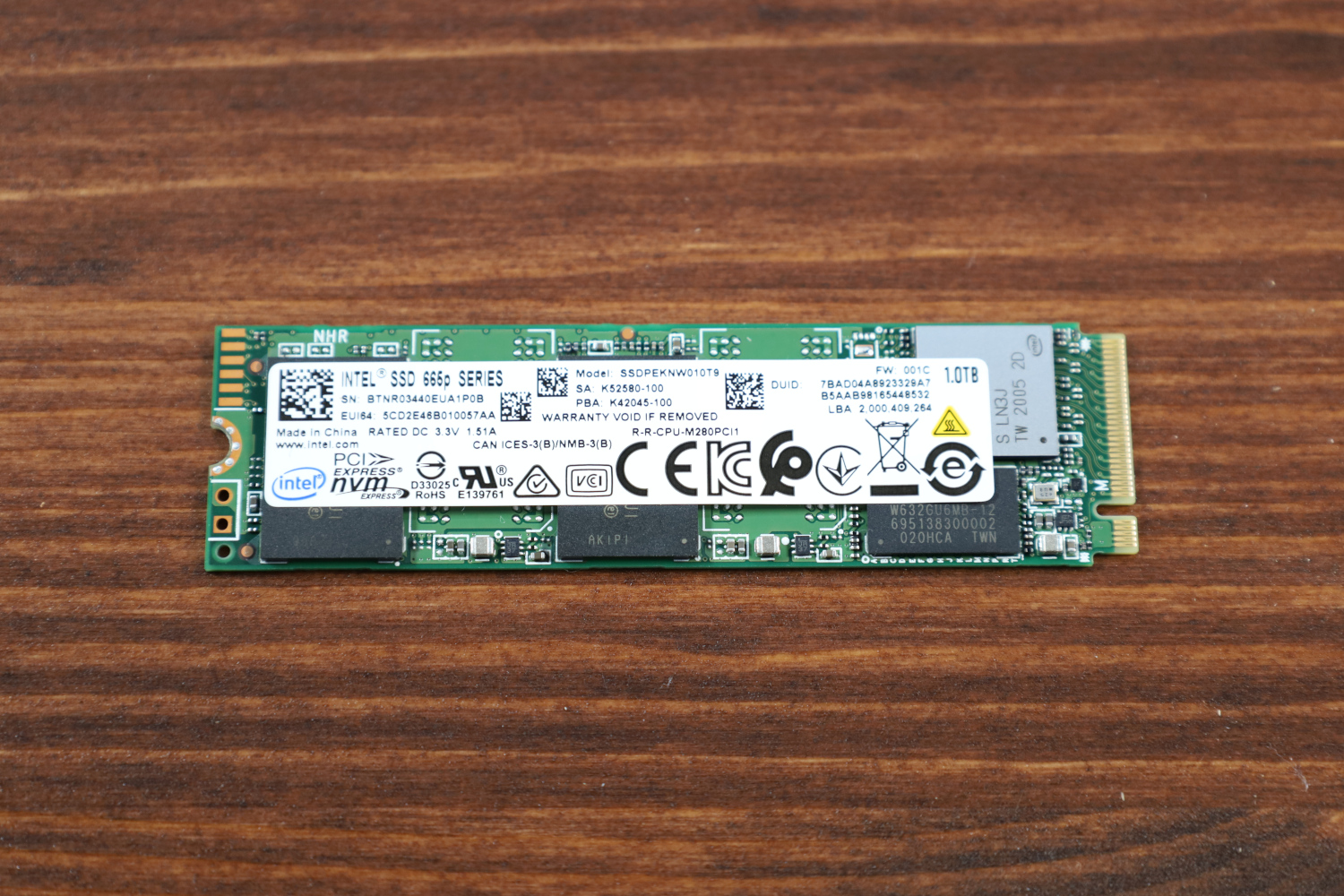
Peeking out from beneath the label on the front of the drive is a set of major components. The top right chip is the Silicon Motion SM2263EN controller, which is a 4-channel PCIe 3.0 NVMe controller. Just below that is a DRAM cache, and the other two chips are the QLC NAND packages. This drive comes equipped with 2x 512GB packages, for a total of 1024GB of NAND. With 1000GB accessible to users, this leaves 24GB reserved by the controller. This small spare area is very typical among consumer-class SSD implementations. We typically see larger reserved areas on data center SSDs and even NAS SSDs such as the Synology SAT5200-960G we reviewed.
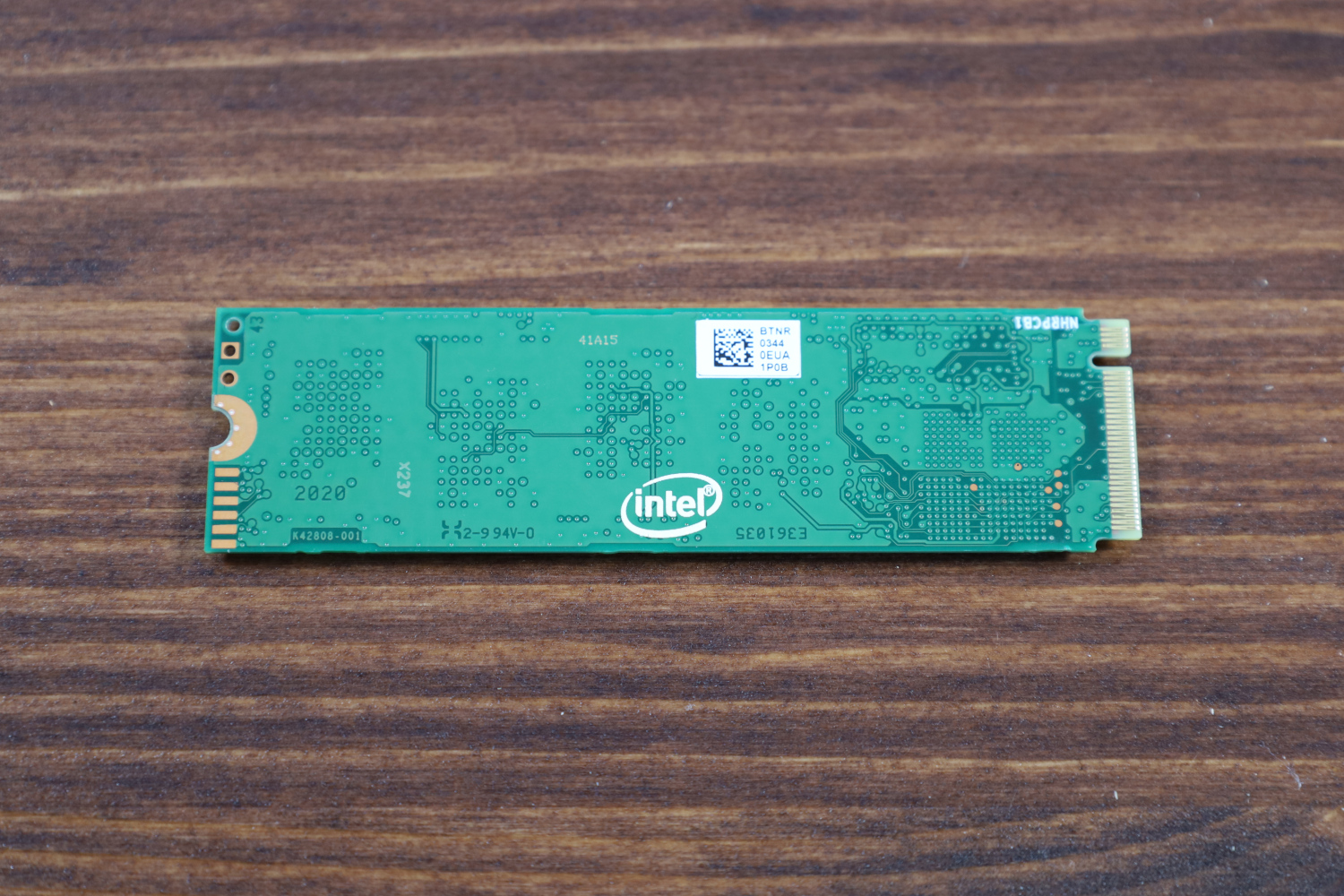
As a single-sided drive, the back is entirely barren. As a consumer drive, there is no power loss protection (PLP.) You can read a bit more about why PLP is important in some server workloads in our piece What is the ZFS ZIL SLOG and what makes a good one.
Intel 665p Specs
The Intel 665p line of TLC-based SSDs is available in 1TB and 2TB capacities.
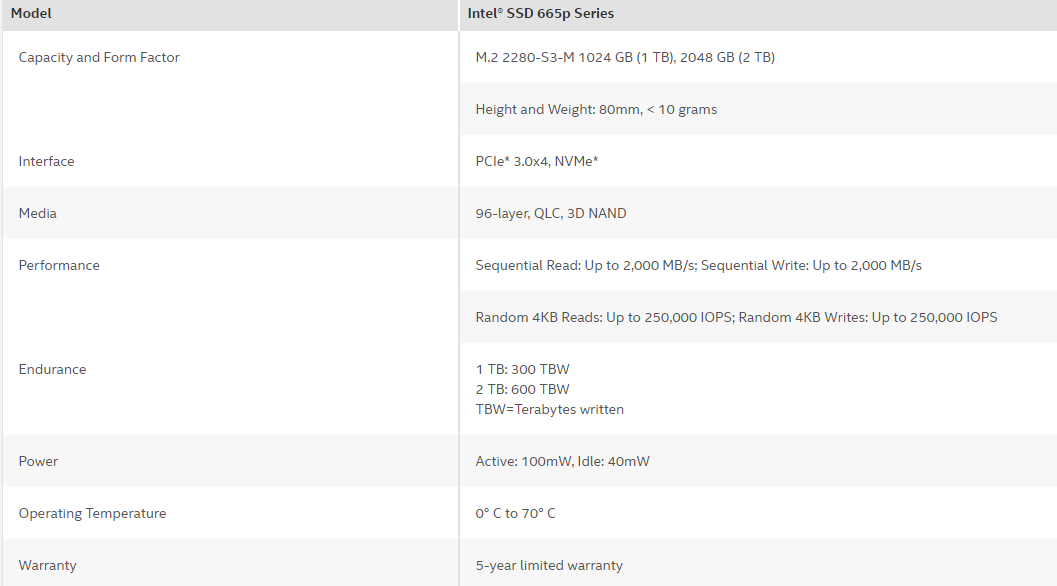
Both capacity drives have the same rated performance, which is modest even by PCIe 3.0 SSD standards. With 2000 MB/s read and write speeds for sequential traffic, and a relatively low 300TBW endurance on the 1TB model, this drive is clearly not targeting the high-end market.
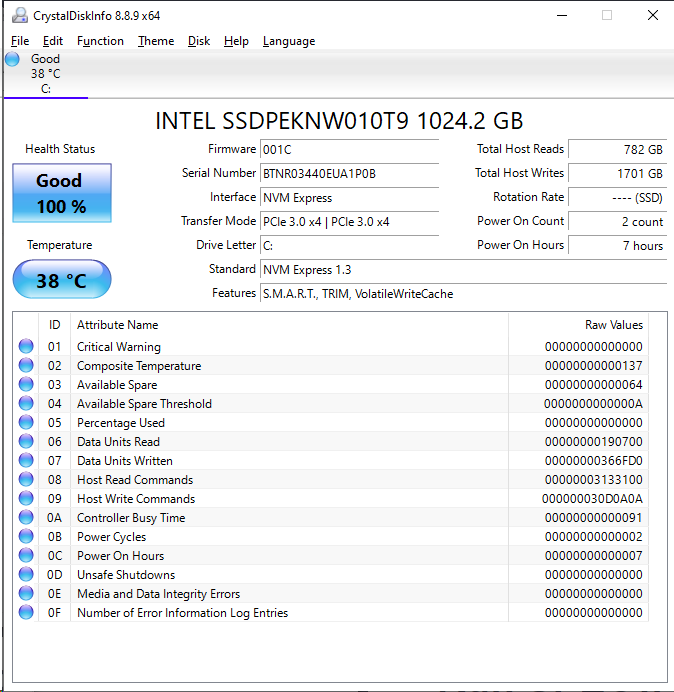
CrystalDiskInfo can give us some basic information about the SSD, and confirms we are operating at PCIe 3.0 x4 speeds using NVMe 1.3.
Test System Configuration
We are using the following configuration for this test:
- Motherboard: ASUS PRIME X570-P
- CPU: AMD Ryzen 9 3900X (12C/24T)
- RAM: 2x 16GB DDR4-3200 UDIMMs
Our testing uses the Intel 665p 1TB as the boot drive for the system, installed in the M.2_1 slot on the motherboard. The drive is filled to 85% capacity with data and then some is deleted, leaving around 60% used space on the volume.
Next, we are going to get into our performance testing.

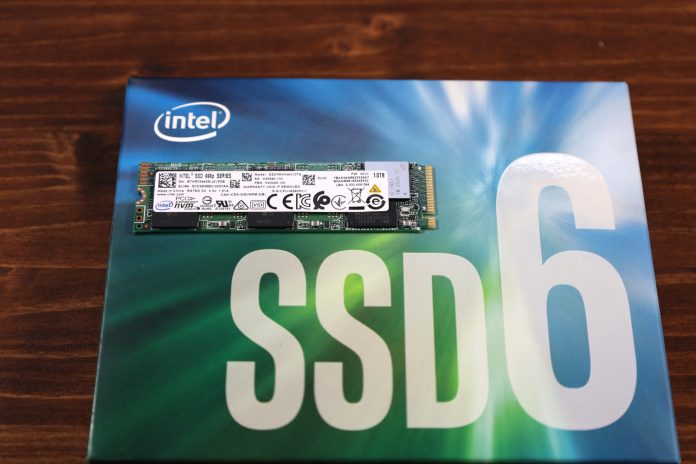



great detailed review! it looks like 665p is already approaching end of life.
670p is on the way.
Yes. We want to look at the 670p, but having the 665p in our benchmark database would be useful when that time comes, so we went ahead and looked at it as well!
No mention of power consumption?
Power consumption active is .1 Watt
Idle is .04 watt it’s a nvme what more do yt want.
I’m a fan, both of the drives in my build are 665ps.
Endurance isn’t high, sure, but that’s planned obsolescence. It only needs to survive until the model as a whole becomes obsolete.
For CrystalDiskInfo drive attributes screenshots, would you be willing to change the view to decimal from hex? Function > Advanced Features > Raw Values > 10 DEC
Quoting: “This drive comes equipped with 2x 512GB packages, for a total of 1024GB of NAND. With 1000GB accessible to users, this leaves 24GB reserved by the controller.”
This is confusing. I’m pretty sure the two NAND packages would 512 GiB (binary: 512 x 2^30 bytes) not 512 GB (decimal: would be 512 x 10^9 bytes), for a total of 1024 GiB = 1 TiB (2^40 bytes). As far as I know (not an expert), this is how NAND goes.
Now, if the usable capacity is actually 1000 GB = 1 TB (decimal: 10^12 bytes) which seems plausible, that would ~99 GB (= 2^40 – 10^12) reserved by the controller, not 24GB.
Even if the usable capacity was 1000 GiB (neither 1 TiB nor 1TB), that would be ~26 GB (= 2^40 – 1000 x 2^30), still not 24 GB (and neither 24 GiB, yet close).
To be fair, even Intel’s product brief is unclear about this and is mixing both binary and decimal units, while using decimal prefixes for both. The advertised capacity, for example, is (I’m quoting) “1024 GB (1 TB)”. I’m lost.
Bottom line is: let’s try to use the right prefixes and things will get easier. This isn’t just nitpicking: at the terabyte or tebibyte scale, this is starting to make a difference and understanding overprovisionning is key to appreciate SSD endurance (and pricing).
G, the official and actual capacity is 1024GB (not GiB). 1TB+2.4% bonus.